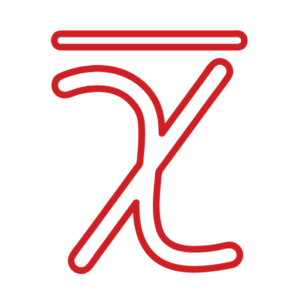Course Name:Language Arts
Course Description
In Grade 3 Language, students will explore the four units: writing, oral communication, reading and media literacy.

Curriculum Information: Language (2008)

Course Developer: Canadian Global School

Development Date: 2022
Course Outline
Grade 3 Language Arts - Total Hours (158 Hours)
Unit One: Writing (40Hours)
Unit Two: Oral Communication (40 Hours)
Unit Three: Reading (40 Hours)
Lastly, students will listen to media text and learn to recall important information using strategies learned in this unit.
Unit Four: Media Literacy (38 Hours)
Resources Needed
This course is entirely online and does not require nor rely on any textbook. Students will need the following resources:
- Laptop and/or personal computer (preferably with Google Chrome or Mozilla Firefox as a web browser)
- Stable internet connection
- A scanner, smartphone camera, or similar device to digitize handwritten or hand-drawn work
- Access to video recording and handwritten work scanning (mobile phone, tablet, iPad, webcams)
Resources required by the student:
- A scanner, smartphone camera, or similar device to upload handwritten or hand-drawn work,
- Laptop and/or personal computer (preferably with Google Chrome or Mozilla Firefox as a web browser)
- Access to video recording and handwritten work scanning (mobile phone, tablet, iPad, webcams)
- Stable internet connection
Note: This course is entirely online and does not require or rely on any textbook.
Resources provided by Canadian Global School
- Access to Google Suites or Microsoft Education for word processing software and presentation software. (The school will distribute accounts to students).
- Supplemental Readings

Teaching Strategies
Using a variety of instructional strategies, the teacher will provide numerous opportunities for students to develop skills of inquiry, problem-solving, and communication as they investigate and learn fundamental concepts. The integration of critical thinking and critical inquiry skills will provide a powerful tool:
- Interact in student-paced and instructor-paced interactive, engaging instructional lessons.
- Understand the value of diversity in learning and society
- Develop self-confidence and self-advocacy skills
- Refine their existing compensatory strategies (reading strategies, writing strategies, listening strategies, study strategies, researching strategies, strategies for memory, organizational strategies, and time management strategies) for learning and develop additional strategies to help meet their potential as learners and use throughout the elementary grades.
- Cultivate problem-solving skills to become independent learners.
- Opportunities to learn in various ways- individually, cooperatively, independently, with teacher direction, hands-on experiences, and through examples followed by practice.
- Accomplish prompts on interactive lessons; students can reflect on different texts. In addition, constant communication with teachers ensures that the students understand complex topics and apply them in their writing. They can also accomplish other tasks using animations, videos, discussion forums, live chat, and other interactive objects.
The course relies on the help of a teacher to support young learners through the lessons. The teacher will be working on facilitating the course content and participating in discussions to support students in developing communication skills.
Course Name:Math
Course Description
In Grade 3 Math, students will explore numbers and operations, patterns and variables, probability and graphs, measurement, and money concepts. They will continue their journey to the mastery of Mathematics.

Curriculum Information:Mathematics (2020)

Course Developer: Canadian Global School

Development Date: 2022
Course Outline
Grade-3 Math -Total Hours (158 Hours)
Unit One: Number (31-Hours)
Unit Two: Algebra (31-Hours)
Unit Three: Data (31-Hours)
Unit Four: Spatial Sense (31-Hours)
Unit Five: Financial Literacy (34-Hours)
Resources required by the student:
- A scanner, smartphone camera, or similar device to upload handwritten or hand-drawn work,
- Laptop and/or personal computer (preferably with Google Chrome or Mozilla Firefox as a web browser)
- Access to video recording and handwritten work scanning (mobile phone, tablet, iPad, webcams)
- Stable internet connection
Resources provided by Canadian Global School
- Access to Google Suites or Microsoft Education for word processing software and presentation software. (The school will distribute accounts to students).
- Supplemental Readings
Note: This course is entirely online and does not require or rely on any textbook.
Resources Needed:
This course is entirely online. It does not require nor rely on any textbook.
Students will need the following resources:
- Laptop and/or personal computer (preferably with Google Chrome or Mozilla Firefox as a web browser)
- Stable internet connection
- A scanner, smartphone camera, or similar device to digitize handwritten or hand-drawn work
- Access to video recording and handwritten work scanning (mobile phone, tablet, iPad, webcams)

Teaching Strategies
Using various instructional strategies, the teacher will provide numerous opportunities for students to develop inquiry, problem-solving, and communication skills as they investigate and learn fundamental concepts. The integration of critical thinking and critical inquiry skills will provide a powerful tool for reasoning and problem solving and is reflected in a meaningful blend of both process and content.
Throughout this course, students will:
- Interact in student-paced and instructor-paced interactive, engaging instructional lessons.
- Develop self-confidence and self-advocacy skills
- Refine their existing compensatory strategies for learning and develop additional strategies to help meet their potential as learners and use them throughout the elementary grades.
- Cultivate problem-solving skills to become independent learners.
- Opportunities to learn in various ways- individually, cooperatively, independently, with teacher direction, through hands-on experiences, and through examples followed by practice.
- Accomplish prompts on interactive lessons. Students can reflect on different texts. In addition, constant communication with teachers ensures that the students understand complex topics and apply them in their writing. They can also accomplish other tasks by using animations, videos, discussion forums, live chat and other interactive objects.
Course Name:Science
Course Description
In Grade 3 Science, students will explore the four units: growth and changes in plants, strong and stable structures, forces causing movement, and soils in the environment

Curriculum Information: Science (2022)

Course Developer: Canadian Global School

Development Date: 2022
Course Outline
Grade-3 Science -Total Hours (95 Hours)
Unit One: Growth and Changes in Plants (23Hours)
Unit Two: Strong and Stable Structures (23-Hours)
Unit Three: Forces Causing Movement (23-Hours)
Unit Four: Soils in the Environment (26-Hours)
Resources required by the student:
- A scanner, smartphone camera, or similar device to upload handwritten or hand-drawn work,
- Laptop and/or personal computer (preferably with Google Chrome or Mozilla Firefox as a web browser)
- Access to video recording and handwritten work scanning (mobile phone, tablet, iPad, webcams)
- Stable internet connection
Resources provided by Canadian Global School
- Access to Google Suites or Microsoft Education for word processing software and presentation software. (The school will distribute accounts to students).
- Supplemental Readings
Note: This course is entirely online and does not require or rely on any textbook.
Resources Needed:
This course is entirely online and does not require nor rely on any textbook. Students will need the following resources:
- Laptop and/or personal computer (preferably with Google Chrome or Mozilla Firefox as a web browser)
- Stable internet connection
- A scanner, smartphone camera, or similar device to digitize handwritten or hand-drawn work
- Access to video recording and handwritten work scanning (mobile phone, tablet, iPad, webcams)

Teaching Strategies
Using a variety of instructional strategies, the teacher will provide numerous opportunities for students to develop skills of inquiry, problem-solving, and communication as they investigate and learn fundamental concepts.
The integration of critical thinking and critical inquiry skills will provide a powerful tool for reasoning and problem solving and is reflected in a meaningful blend of both process and content.
Throughout this course, students will:
- Interact in student-paced and instructor-paced interactive, engaging instructional lessons.
- Develop self-confidence and self-advocacy skills
- Refine their existing compensatory strategies for learning and develop additional strategies to help meet their potential as learners and use them throughout the elementary grades.
- Cultivate problem-solving skills to become independent learners.
- Opportunities to learn in various ways- individually, cooperatively, independently, with teacher direction, through hands-on experiences, and through examples followed by practice.
- Accomplish prompts on interactive lessons. Students can reflect on different texts. In addition, constant communication with teachers ensures that the students understand complex topics and apply them in their writing. They can also accomplish other tasks by using animations, videos, discussion forums, live chat and other interactive objects.
Course Name: Computer Science
Course Description
In Grade 3 Computer Science, students will have a deeper understanding of how to read and alter existing code, including sequential events. The course begins with a review of the concepts found in earlier courses, including loops and events. Afterward, students will develop their understanding of algorithms, nested loops while loops, conditionals, and more.

Course Developer: Canadian Global School

Development Date: 2022
Course Outline
Grade-3 Computer Science -Total Hours (63 Hours)
Unit One: Intro to Programming (10-Hours)
Unit Two: Conditionals (16-Hours)
Unit Three: Loops (17-Hours)
Unit Four: Functions (20-Hours)
Resources required by the student:
- A scanner, smartphone camera, or similar device to upload handwritten or hand-drawn work,
- Laptop and/or personal computer (preferably with Google Chrome or Mozilla Firefox as a web browser)
- Access to video recording and handwritten work scanning (mobile phone, tablet, iPad, webcams)
- Stable internet connection
Resources provided by Canadian Global School
- Access to Google Suites or Microsoft Education for word processing software and presentation software. (The school will distribute accounts to students).
- Supplemental Readings
Note: This course is entirely online and does not require or rely on any textbook.
Resources Needed:
This course is entirely online and does not require nor rely on any textbook. Students will need the following resources:
- Laptop and/or personal computer (preferably with Google Chrome or Mozilla Firefox as a web browser)
- Stable internet connection

Teaching Strategies
Using a variety of instructional strategies, the teacher will provide numerous opportunities for students to develop skills of inquiry, problem-solving, and communication as they investigate and learn fundamental coding concepts. The integration of critical thinking and critical inquiry skills will provide a powerful tool for reasoning and problem solving, and is reflected in a meaningful blend of both process and content. Throughout this course, students will:
- Interact in student-paced and instructor-paced interactive, engaging instructional lessons.
- The content is web-based, with students writing and running code in the browser.
- Teachers utilize tools and resources provided by Kodable to leverage time in the classroom and give focused 1-on-1 attention to students.
Course Name: Social Studies
Course Description
In Grade 3 Social Studies, students will discover communities in Canada from 1780 to 1850. They will analyze the impacts of new settlements on the environment. Students will study landform regions and types of land use in areas of Ontario. They will describe the role of municipalities and analyze their environmental impacts.

Curriculum Information:Social Science (2018)

Course Developer: Canadian Global School

Development Date: 2022
Course Outline
Grade -3 Social Studies - Total Hours (63 Hours)
Strand A: Communities in Canada, 1780-1850 (31-Hours)
Strand B: Living and Working in Ontario (32-Hours)
Resources required by the student:
- A scanner, smartphone camera, or similar device to upload handwritten or hand-drawn work,
- Laptop and/or personal computer (preferably with Google Chrome or Mozilla Firefox as a web browser)
- Access to video recording and handwritten work scanning (mobile phone, tablet, iPad, webcams)
- Stable internet connection
Resources provided by Canadian Global School
- Access to Google Suites or Microsoft Education for word processing software and presentation software. (The school will distribute accounts to students).
- Supplemental Readings
Note: This course is entirely online and does not require or rely on any textbook.
Resources Needed:
This course is entirely online and does not require nor rely on any textbook. Students will require the following resources:
- Laptop and/or personal computer (preferably with Google Chrome or Mozilla Firefox as a web browser)
- Stable internet connection
- A scanner, smartphone camera, or similar device to digitize handwritten or hand-drawn work
- Access to video recording and handwritten work scanning (mobile phone, tablet, iPad, webcams)

Teaching Strategies
Using a variety of instructional strategies, the teacher will provide numerous opportunities for students to develop skills of inquiry, problem solving, and communication as they investigate and learn fundamental concepts. The integration of critical thinking and critical inquiry skills will provide a powerful tool for reasoning and problem solving, and is reflected in a meaningful blend of both process and content Throughout this course students will:
- Interact in student-paced and instructor-paced interactive, engaging instructional lessons.
- Understand the value of diversity in learning and in society
- Refine their existing compensatory strategies for learning and develop additional strategies to help meet their potential as learners and use them throughout the elementary grades.
- Cultivate problem-solving skills to become independent learners.
- Opportunities to learn in various ways- individually, cooperatively, independently, with teacher direction, through hands-on experiences, and through examples followed by practice.
- Accomplish prompts on interactive lessons, students can reflect on different texts. In addition, constant communication with teachers ensures that the students understand complex topics and apply them in their writing. They can also accomplish other tasks through the use of animations, videos, discussion forums, live chat and other interactive objects.
The course relies on the help of a teacher to support young learners through the






